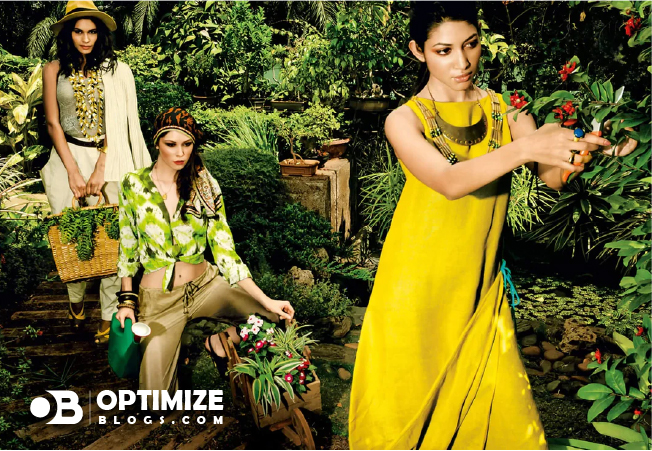
Fashion is a powerful form of self-expression, but it's also an industry with a significant environmental footprint. The production of clothing, from sourcing materials to manufacturing and transportation, can have adverse effects on the planet. However, a growing movement towards sustainable fashion is reshaping the way we think about clothing. In this comprehensive guide, we'll delve into the world of sustainable fashion, explore its importance, and provide practical tips for making eco-friendly choices in your wardrobe.
The Importance of Sustainable Fashion
Reducing Environmental Impact
The fashion industry is a major contributor to pollution, water consumption, and waste. Sustainable fashion aims to reduce these environmental impacts by promoting eco-friendly practices.
Ethical Production
Sustainable fashion focuses on fair labor practices and safe working conditions for garment workers. This ensures that the people behind the clothes are treated with dignity and respect.
Promoting Longevity
Sustainable fashion encourages quality over quantity. Investing in well-made, timeless pieces reduces the need for frequent replacements, ultimately saving resources.
Raising Awareness
The rise of sustainable fashion helps raise awareness about the environmental and social challenges associated with the fashion industry. It empowers consumers to make informed choices.
Practical Tips for Sustainable Fashion
Buy Less, Choose Well
The first step to sustainable fashion is to buy fewer clothes but of higher quality. Invest in timeless pieces that you can wear for years, rather than trendy items that quickly go out of style.
Prioritize Ethical Brands
Support brands that prioritize ethical and fair labor practices. Look for certifications like Fair Trade or read about a brand's commitment to workers' rights.
Embrace Secondhand and Vintage
Shopping at thrift stores, consignment shops, and online vintage stores is an excellent way to reduce clothing waste and discover unique pieces.
Quality Over Quantity
Pay attention to the quality of materials and craftsmanship when buying new clothes. Well-made items last longer and are less likely to end up in landfills.
Choose Sustainable Fabrics
Opt for clothing made from sustainable materials like organic cotton, hemp, bamboo, Tencel, or recycled fibers. These fabrics have a lower environmental impact.
Consider Clothing Rental
For special occasions or trendy items, consider renting clothing instead of buying. Rental services are a sustainable way to enjoy fashion without the long-term commitment.
Care for Your Clothes
Extend the lifespan of your clothing by following care instructions, repairing items when needed, and avoiding excessive washing and dry cleaning.
Learn Basic Sewing Skills
Basic sewing skills can help you mend small tears, replace buttons, and make alterations, reducing the need to discard damaged clothing.
Support Local and Independent Designers
Discover and support local or independent designers who often have smaller-scale, more sustainable production practices.
Recycle and Upcycle
When you're ready to part with clothing, donate, recycle, or upcycle it. Old garments can be transformed into new items, reducing waste.
Sustainable Fashion Myths and Realities
Myth: Sustainable Fashion Is Expensive
While some sustainable fashion brands can be pricey, investing in quality pieces can save money in the long run. Plus, there are affordable sustainable options, including secondhand shopping.
Myth: Sustainable Fashion Is Bland and Unfashionable
Sustainable fashion is anything but bland. Many eco-friendly brands offer stylish and on-trend clothing. Plus, vintage and secondhand shopping provide unique fashion finds.
Myth: Sustainable Fashion Is Inconvenient
Sustainable fashion can be as convenient as traditional shopping. Many eco-friendly brands offer online shopping, and thrift stores provide a treasure hunt experience.
Myth: Individual Choices Don't Matter
Every sustainable fashion choice matters. When consumers demand eco-friendly options, it encourages more brands to adopt sustainable practices.
Conclusion: Dressing with a Purpose
Sustainable fashion is not just a trend; it's a movement that seeks to transform the fashion industry for the better. By making conscious choices about what we wear, we can reduce our environmental impact, support ethical practices, and promote longevity in our wardrobes. Sustainable fashion empowers us to dress with a purpose, aligning our values with our style. So, whether you're exploring secondhand stores, choosing eco-friendly fabrics, or supporting ethical brands, every step you take towards sustainable fashion makes a positive difference for the planet and its people.






